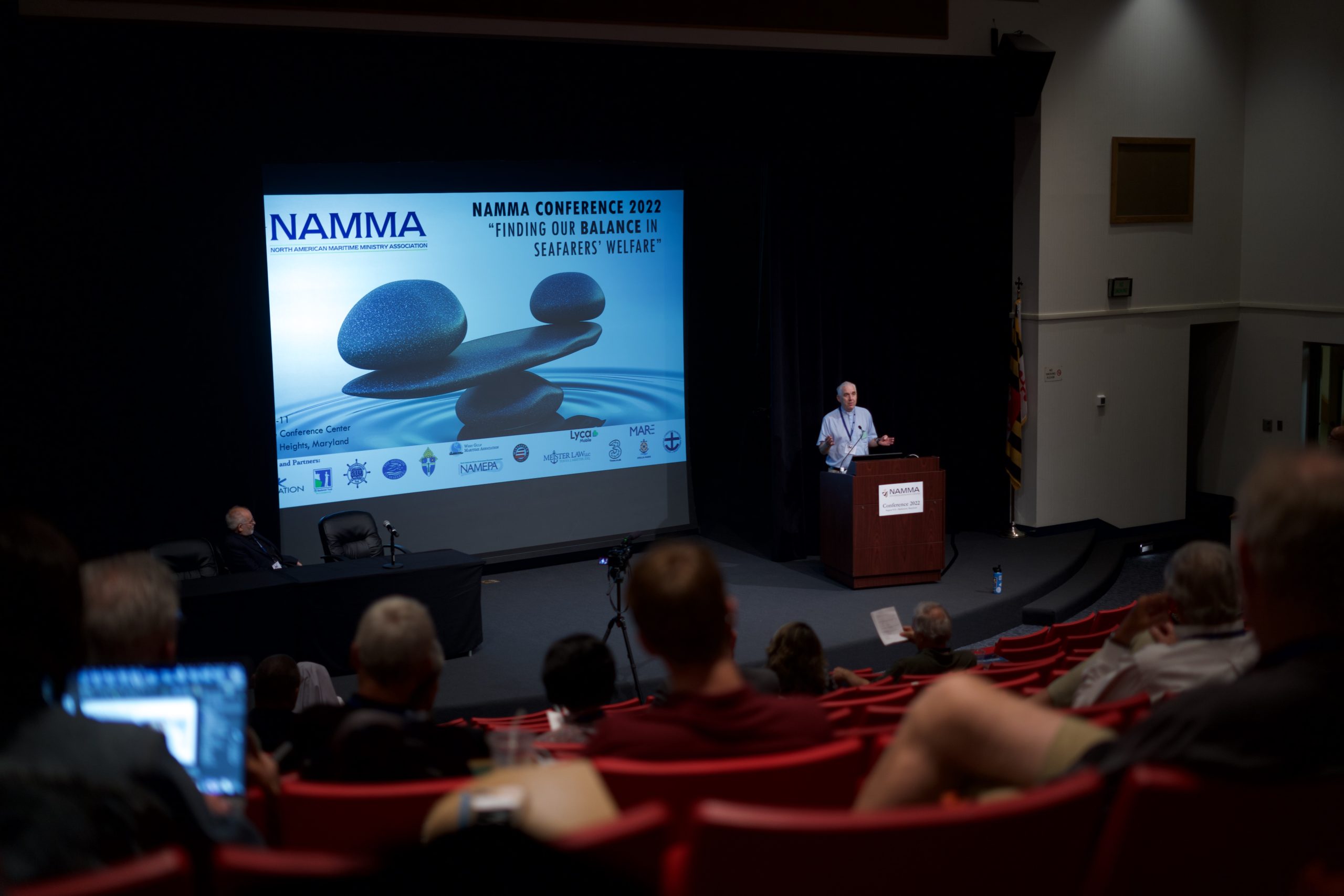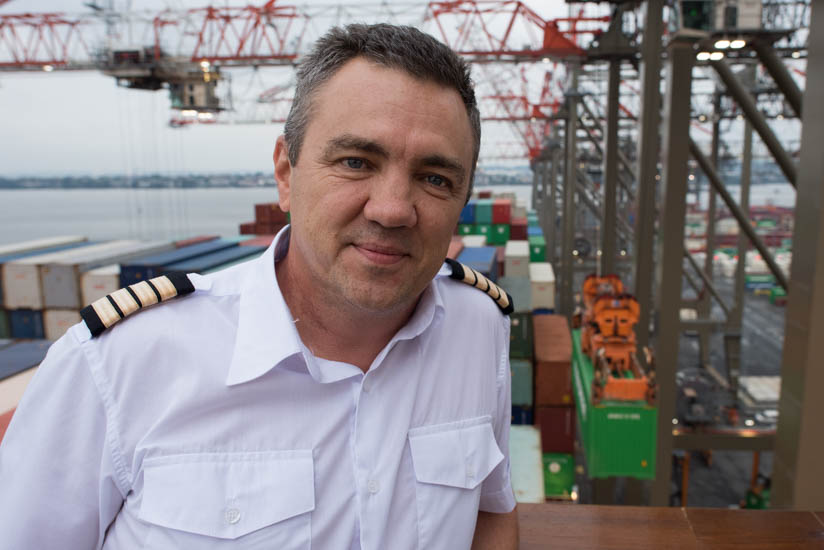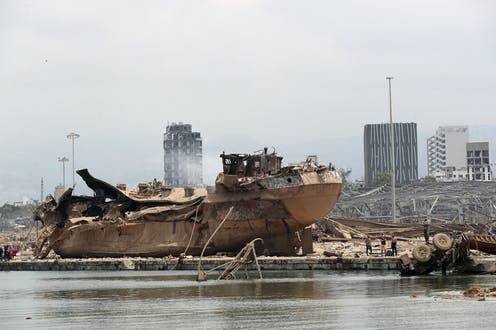By Chaplain David Reid MA AFNI
Ship gangway design has not materially changed in the past 50 years. However, ships have changed substantially in terms of size, manning and function – the humble ship’s gangway or accommodation ladder, as it is properly known, has remained essentially the same.
Yet this humble and seemingly forgotten aspect of nautical design performs an extremely important function. Access via the gangway is the primary access for all shore personnel and this may include large numbers of longshore workers as well as vendors, chandlers, agents and regulatory officials. As chaplains and ship visitors, we are also frequent gangway users. Many shore personnel are not conversant with the fact when a gangway is being used in a suspended mode the interface is dynamic. The ship can move and quickly change the relationship between the dock and the foot of the gangway. Even when gangways are landed, they are still prone to sudden movement.
Gangway safety is important.
The lower platform of the gangway is the first landing point – you should never step on to the lower platform without having a good handhold on the railings. Many accidents have taken place at the lower platform because individuals have either slipped or in some cases the lower platform is not horizontal or has not been fully secured.
At a major port terminal in the port of Philadelphia an experienced marine surveyor stepped on to the lower platform of a ships gangway and immediately fell between the ship and the dock. The pin securing the lower platform was not secure. Fortunately for the surveyor the gangway net had been properly rigged and he landed in the net and not in the hypothermic cold water of the Delaware River. The surveyor was a master mariner and well versed in ships gangways because he routinely boarded ships as part of his work. This example illustrates two things: one is that even the most experienced can become complacent and second that for the social welfare ship visitor the gangway represents a risk that needs to be respected.
Here are 10 key precautions that everyone using a ships gangway needs to be mindful about:
- Gangways are narrow – they are a one-way system, so always give right of way to those coming up, wait at the top for clear passage before starting down.
- When walking up a gangway you should always have one hand free to hold the handrail, ideally both – never carry anything which prevents you from holding on.
- Keep in mind that on larger ships the length of the gangway and the height of the climb may be very significant, be prepared to pause during the climb to avoid being stressed.
- Be careful during inclement weather when the treads of the steps may be slippery or icy. Gangway steps are designed with a curved profile so that they function at both shallow and steep angles.
- Every gangway is required to have a safety net that extends 2 meters forward and aft of the gangway itself, the net is to avoid anyone falling into the gap between the ship and the dock. This is particularly relevant at the foot of the gangway where people must transition between the dock and the lower platform.
- In some cases, the gangway may be rigged from the main deck and it may be under a working cargo area, avoid using the gangway when cranes are working cargo overhead.
- Many ships now post signs stating the maximum number of persons permitted on the gangway at any one-time, larger ships, and longer gangways mean that their safe working load can be exceeded with too many persons at one time
- Be mindful of ‘jury-rigged’ planks or similar that are used to create a bridge between the dock and the lower platform of the gangway.
- When ships are working cargo and pumping ballast the gangway is in constant need for adjustment – this may also be due to large tidal changes in some ports. If the lower platform of the gangway is not aligned with the dock, STOP and request the duty officer and/or deck watch person to adjust the gangway.
- In some ports when ships are heavily loaded and the dock has a high wall, the ships main gangway or accommodation ladder will have difficulty to be deployed, you may see other access ladders deployed – in some cases terminals may deploy a shore gangway for a limited period of time. Often these are rigged over the ships bulwarks or railings and that means that there will be a second set of steps to be traversed in order to reach the deck. In these cases, it is always safer to descend these second steps backwards using three points of contact at all times.
The Nautical Institute in London will celebrate its 50th anniversary next year, the Institute has been a strong advocate of safety at sea encouraging members to share both near misses and details of accidents and the background into the causes. The Institute’s monthly magazine “Seaways” includes the MARS report. MARS stands for Maritime Accident Report System. All of the reports are anonymous as far as names of ships, people and locations. The sole purpose is to share what happened and why. The Institute maintains a MARS searchable database that all of its members can access. In writing this article, I did a quick search of that database and found six gangway accidents profiled in recent years.
In my 50+ years within the maritime industry, I have rigged gangways as a cadet, supervised gangways as a deck officer, and I have been responsible for the maintenance of gangways as a chief officer. As a stevedore manager and terminal operator, I cannot remember how many different gangway scenarios I have experienced – all I can tell you is that they are many and varied.
In more recent years serving as a chaplain in the port of Philadelphia I have experienced yet more gangway moments. One that serves as an example was during my visit to a 13,000 teu container ship that was lightly loaded and therefore had a very high freeboard. I was leaving the ship after spending an hour listening to members of the crew share their experiences of their brand-new ship. As I arrived at the head of the gangway to hand back my shipboard security pass, I observed a large group gathering on the dock, perhaps 20 or more. I headed down the very long and steep gangway and stepped back on to the dock. I recognized one of the group and realized that this was an official visit including the local press to welcome the new ship to Philadelphia. As I stood on the dock waiting for the terminal bus to take me back to the gate, I observed the group follow each other up the gangway. Unfortunately, they had not read the sign that limited the number of persons on the gangway, [limit of 5]. Because the gangway was very long due to the size of the container ship the group just kept marching up adding more people until the entire group filled the gangway. Fortunately, the ship was brand new, and the gangway was suspended on its cables, all in good condition. They all made it safely to the main deck. Safety signs are ineffective if nobody reads them!
When using any gangway to board or disembark a ship, remain situationally aware. STOP, observe BEFORE you put your foot on the gangway. Always KEEP ONE HAND FOR YOU AND ONE FOR THE SHIP.





